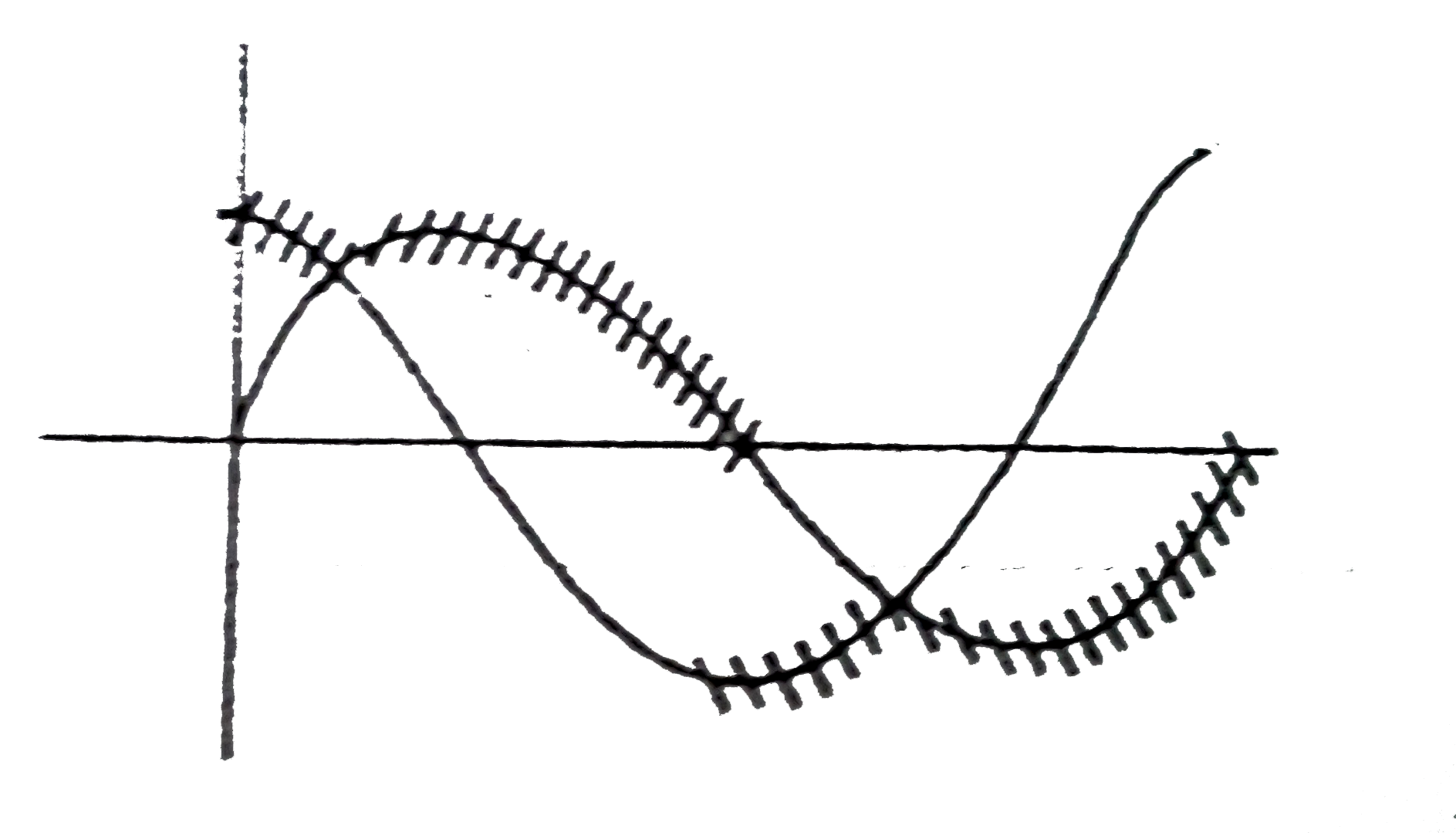f:[0,2π]→[−1,1] and g:[0,2π]→[−1,1] be respectively given by f(x)=sin and g(x)=cosx.
Define h:[0,2π]→[−1,1] by h(x)={max{f(x),g(x)}if0≤x≤πmin{f(x),g(x)}ifπ<x≤2π number of points at which h(x) is not differentiable is
The correct Answer is:3

h(x)=⎧⎪
⎪
⎪
⎪
⎪
⎪
⎪⎨⎪
⎪
⎪
⎪
⎪
⎪
⎪⎩cosx0≤x≤π4sinxπ4<x≤πcosxπ<x≤5π4sinx5π4<x≤2π
Topper's Solved these Questions
Similar Questions
Suppose that the function f(x) and g(x) satisfy the system of equations f(x)+3g(x)=x2+x+6
and 2f(x)+4g(x)=2x2+4 for every x. The value of x for which f(x)=g(x) can be equal to
View SolutionAn aqueous solution of borax is
View SolutionThe least positive vlaue of the parameter 'a' for which there exist atleast one line that is tangent to the graph of the curve y=x3−ax, at one point and normal to the graph at another point is pq, where p and q ar relatively prime positive integers. Find product pq.
View SolutionLet f:R rarr R and g:R rarr R be respectively given by f(x)=|x|+1 and g(x)=x^(2)+1. Define h:R rarr R by h(x)={max{f(x),g(x)},quad if x 0 The number of points at which h(x) is not differentiable is
View Solutionf:[0,2π]→[−1,1] and g:[0,2π]→[−1,1] be respectively given by f(x)=sin and g(x)=cosx.
Define h:[0,2π]→[−1,1] by h(x)={max{f(x),g(x)}if0≤x≤πmin{f(x),g(x)}ifπ<x≤2π number of points at which h(x) is not differentiable is
View SolutionLet f:R→R and g:R→R be respectively given by f(x)=|x|+1 and g(x)=x2+1. Define h:R→R by
h(x)={max{f(x),g(x)}ifx≤0min{f(x),g(x)}ifx>0
The number of points at which h(x) is not differentiable is :
View SolutionLet f:R→R be defined by f(x)=−x3+x,g:[−1,1]→Randh:[−1,1]→R is defined by g(x) = min(fx),0), h(x) = max(f(x),0)
f:R→R will be___
View SolutionLet f:R→R be defined by f(x)=−x3+x,g:[−1,1]→Randh:[−1,1]→R is defined by g(x) = min(fx),0), h(x) = max(f(x),0)
Range of g(x) will be____
View SolutionLet f:R→R be defined by f(x)=−x3+x,g:[−1,1]→Randh:[−1,1]→R is defined by g(x) = min(fx),0), h(x) = max(f(x),0)
Number of roots of the g(x)=−12 is____
View SolutionA={−2,−1,0,1,2},B={5,7,11} and f:A→B,wheref(x)=x2−x+5,then find the image of -1.
View SolutionLet f:R→R be defined by f(x)=−x3+x,g:[−1,1]→Randh:[−1,1]→R is defined by g(x) = min(fx),0), h(x) = max(f(x),0)
Which one will be both the odd and even function ?
View SolutionLet the functions : (−1,1)→Randg:(−1,1)→(−1,1) be defined by f(x)=|2x−1|+|2x+1|andg(x)=x−[x] where [ x ] denotes the greatest integar less than or equal to x, Let f∘g(−1,1)→R be the composite function defined by (f∘g)(x)=f(g(x)). Suppose c is the number of points in the interval (−1,1) at which f∘g is NOT continuous , and suppose d is the number of points in the interval (−1,1) at which f∘g is NOT differentiable . Then the value of c + is ______
View SolutionLet f(x)=max(1+s∈x,1,1−cosx),x∈[0,2π],andg(x)=max{1,|x−1|},x∈R. Then g(f(0))=1 (b) g(f(1))=1 f(f(1))=1 (d) f(g(0))=1+sin1
View Solutionयदि f(x)=ex,g(x)=sin−1x और h(x)=f(g(x)), तब h'(x)/h(x)=
View Solutionयदि F(x)=f(x)+g(x),G(x)=f(x)−g(x) और H(x)=f(x)g(x), जहाँ f(x)=1−2sin2x,g(x)=cos2x∀f:R→[−1,1] एवं g:R→[−1,1]
H (x) का प्रान्त एवं परास क्रमशः है
View Solutionयदि F(x)=f(x)+g(x),G(x)=f(x)−g(x) और H(x)=f(x)g(x), जहाँ f(x)=1−2sin2x,g(x)=cos2x∀f:R→[−1,1] एवं g:R→[−1,1]
यदि F:R→[−2,2] तब
View Solution
